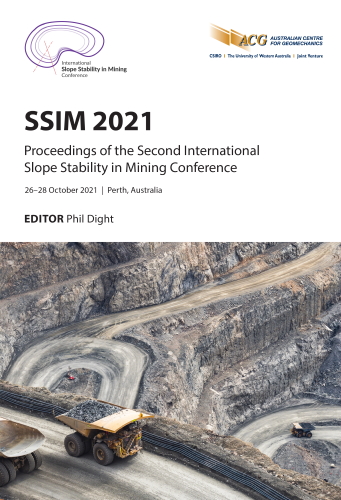Mining through historic underground workings and systematic void management processes at McArthur River Mine

|
Authors: Smith, W; Bertuzzi, R |
DOI https://doi.org/10.36487/ACG_repo/2135_17
Cite As:
Smith, W & Bertuzzi, R 2021, 'Mining through historic underground workings and systematic void management processes at McArthur River Mine', in PM Dight (ed.), SSIM 2021: Second International Slope Stability in Mining, Australian Centre for Geomechanics, Perth, pp. 277-286, https://doi.org/10.36487/ACG_repo/2135_17
Abstract:
The McArthur River Mine (MRM) is in the Northern Territory, Australia, and is the largest known stratiform sediment-hosted Zn-Pb deposit. Mining of the deposit commenced in 1995 as an underground operation before transitioning into an open cut in 2006. The primary method of underground mining was room and pillar, specifically targeting the high-grade ore. Bulk sublevel open stoping and bench stoping were also used where appropriate. The bulk stopes were taken with a stope and retreat method, leaving all stopes open on closure of the underground mine. The historic underground voids have presented a significant hazard to be managed as the open cut has progressed. This paper presents the analysis methods used to determine a safe working crown pillar thickness for the open pit mining operations. The primary analysis methods used at MRM to determine a safe working level are the catastrophic failure analysis (CFA) and scaled span analysis (SSA). The CFA considers a progressive failure of the crown utilising a bulking factor to represent the volumetric increase between intact rock and broken rock and determines whether a failure event will progress to the surface or choke itself off. The SSA is an empirical approach based on rock mass quality and scaled span. Failure events such as caving, ravelling, and chimneying can reduce crown pillar thickness, which in turn can lead to subsidence and collapse. Probe drilling is conducted from active open cut levels to investigate the surface crown pillar and to delineate the spatial extent of the underground void. Probe drilling has identified several cases of failure events in most bulk stopes. These failure events, in conjunction with locations where the crown has not failed, have been used to calibrate an empirical method for estimating crown pillar thickness to the MRM site conditions. This paper presents the systematic void management processes, analysis methods used to determine a safe working crown pillar thickness, and unique challenges faced while mining through historic underground workings.
Keywords: void management, open pit mining, underground mining
References:
Bar, N, Du Plessis, P, Nicholl, S, Welideniya, S, Ryan, C & McAllister, P 2018, ‘Risk management strategies for open pit mining through historic underground workings’, Proceedings of the 10th Asian Rock Mechanics Symposium, International Society for Rock Mechanics and Rock Engineering, Lisbon.
Carter, TG 2014, ‘Guidelines for use of the scaled span method for surface crown pillar stability assessment’, Proceedings of the 1st International Conference on Applied Empirical Design Methods in Mining, International Society for Rock Mechanics and Rock Engineering, Lisbon.
© Copyright 2025, Australian Centre for Geomechanics (ACG), The University of Western Australia. All rights reserved.
View copyright/legal information
Please direct any queries or error reports to repository-acg@uwa.edu.au
View copyright/legal information
Please direct any queries or error reports to repository-acg@uwa.edu.au